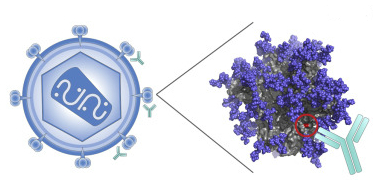Newsletter Signup - Under Article / In Page
"*" indicates required fields
Last week we published a thorough review on current approaches for an HIV cure, which may be available as soon as 2020. Academia has come up with two additional strategies that could make a huge difference in the study of HIV.
HIV affects 36.7 million people in the world and caused 1.1 million deaths last year. Plenty of resources have been invested into developing a cure in the last 35 years. It is the research from experts around the world that makes HIV treatments a reality. Today, we want to share two recent discoveries that are relevant to understand how these evasive little creatures work – and how to stop them.
The first line of exciting research comes from an international project based in Amsterdam and funded in part by the European Union. The SHEV project focuses on the production of stable HIV Env subunits (the ones that form the viral envelope) in vitro. By modifying the protein’s structure, the researchers plan to create HIV vaccines that mimic the 3D structure of the virus envelope to generate efficient neutralizing antibodies.
Published in Cell Reports, the group showed that the most vulnerable region of the virus is not actually the proteins themselves, but the holes between them. These ’empty’ regions of the virus are shared by 89% of strains. The scientists will keep working on it to develop advanced antibodies that can target these weak spots.

The second piece of research was published last month and shows that during HIV-2 infections, the patients are able to form a population of CD8 T-cells, stable in the long-term, with an unusually strong ability to fight the virus. This seems to be the reason why the human immune system can stop HIV-2 progression in 80% of cases without any treatment.
Unluckily, the HIV-1 strain progresses in 99% of the patients. But further work from the team, who combines expert researchers from France and the UK, will investigate how to replicate the effects of HIV-2 on its big brother HIV-1.
We can clearly see that all the efforts put in finding an HIV cure are starting to yield results. As we highlighted in our HIV review, understanding how the virus works is essential to develop effective treatments, which is perfectly exemplified in these amazing lines of research.
Images: Tashatuvango /Shutterstock; L. E. McCoy et al., Cell Reports, 2016; 16 (9): 2327
Are you interested in antibody therapy R&D?







